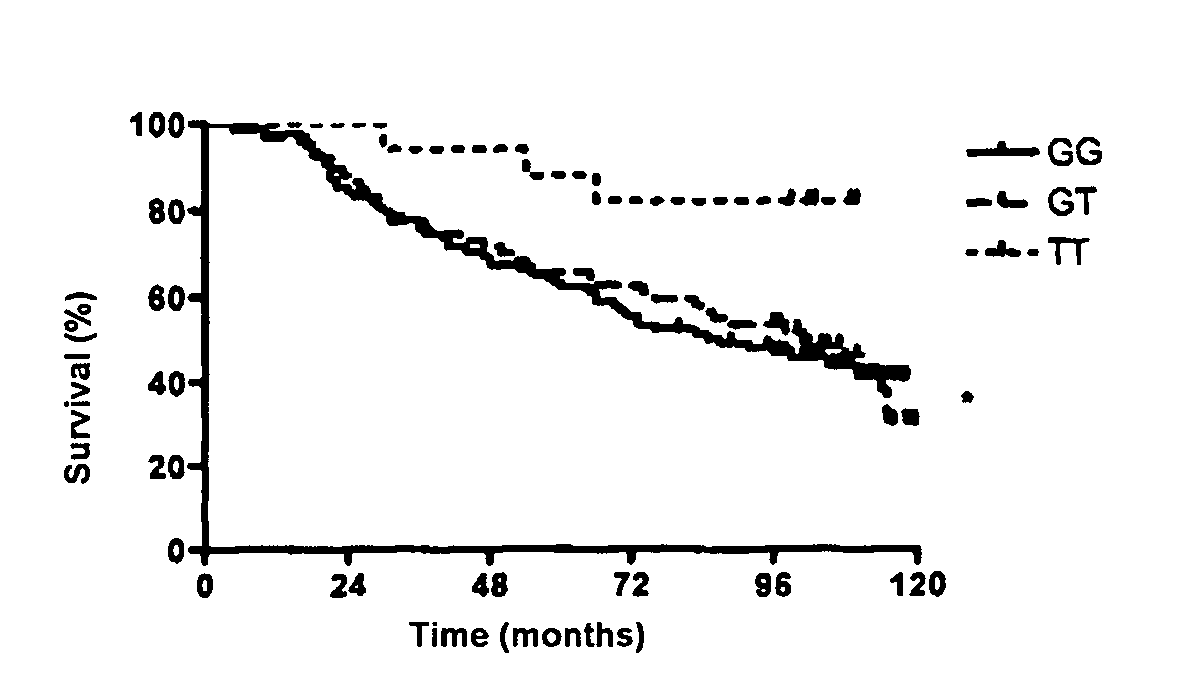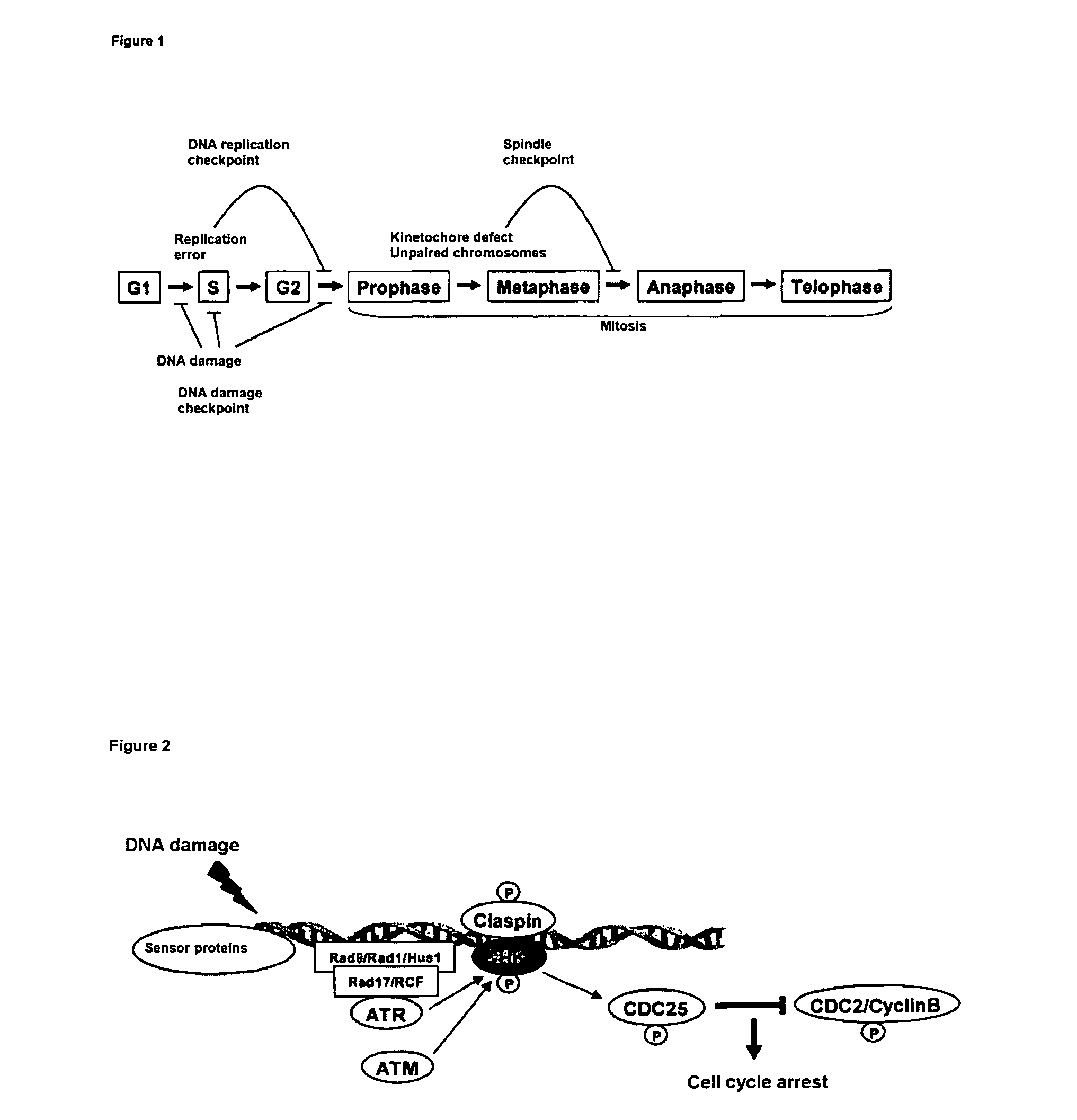Use of genetic modifications in human gene chk1 which codes for checkpoint kinase 1
- Summary
- Abstract
- Description
- Claims
- Application Information
AI Technical Summary
Benefits of technology
Problems solved by technology
Method used
Image
Examples
example 1
[0084]Bladder cancer is a malignant tumor of the mucous membrane of the urinary bladder and most frequently occurs between the age of 60 and 70. Men are affected by it three times as often as women. In men, bladder cancer is the third most frequent type of cancer after lung and prostate cancer. Bladder cancer can be caused by external influences. The risk factors include smoking, permanent strain on the organism by chemicals, like for example colorants or analgesic misuse. In many patients, the examinations show that it is a superficial tumor. This can be removed by surgery using a cystoscope. More than 70% of the patients treated because of a superficial bladder carcinoma show tumor rescrudescence in progression. In that, in more than half the patients, rescrudescence tumors with non-muscle-invasive disease occur. These can be curatively treated or controlled, respectively, by transurethral resection. It is therefore important to detect these lesions early ...
example 2
Colorectal Carcinoma
[0086]The colorectal carcinoma is the most frequent type of tumor in the gastrointestinal tract and one of the main causes for tumor-related death worldwide (12-15% of the total cancer mortality). In Germany, the incidence is about 51,000 new cases per year. The average 5-year survival rate after tumor resection is only approx. 50%. Eating habits, cancer-promoting metabolites, exogenous carcinogens and certain predisposing diseases are included in the risk factors for the formation of a colorectal carcinoma. The standard method for predicting the progression of the disease is the TNM or UICC stage system, respectively. Patients with UICC stages III or IV generally have a worse prognosis than patients with UICC stages I or II. An adjuvant chemotherapy is performed for metastasized colorectal carcinomas (UICC stages III and IV) and can enhance the local effect of radiation therapy. A majority of these patients develops recrudescences or metastases, which makes inte...
example 3
Chronic Lymphatic Leukemia
[0089]Chronic lymphatic leukemia (CLL) is a chronic form of leukemia. Characteristic for the disease is a high number of abnormal lymphocytes. A total of 30 percent of all leukemic diseases are chronic lymphatic leukemias. The median disease age is 65 years. A CLL can be benign for up to 20 years, i.e. the patients show no symptoms except for enlarged lymph nodes, tiredness and lack of appetite. The treatment only starts, if the number of lymphocytes highly increases, the portion of erythrocytes and thrombocytes decreases, or other complications occur. An early treatment has no influence on the progression of the disease. The most important therapeutic measure is chemotherapy. The further the disease has progressed, the higher are the disturbances of health by the modification of the organ system. Depending on the Binet stage of the disease, the doctor can estimate the prognosis. The stage of a CLL is, among others, characterized by how many lymphocytes are...
PUM
| Property | Measurement | Unit |
|---|---|---|
| Magnetic field | aaaaa | aaaaa |
| Electric charge | aaaaa | aaaaa |
| Electric charge | aaaaa | aaaaa |
Abstract
Description
Claims
Application Information
 Login to View More
Login to View More - R&D
- Intellectual Property
- Life Sciences
- Materials
- Tech Scout
- Unparalleled Data Quality
- Higher Quality Content
- 60% Fewer Hallucinations
Browse by: Latest US Patents, China's latest patents, Technical Efficacy Thesaurus, Application Domain, Technology Topic, Popular Technical Reports.
© 2025 PatSnap. All rights reserved.Legal|Privacy policy|Modern Slavery Act Transparency Statement|Sitemap|About US| Contact US: help@patsnap.com



